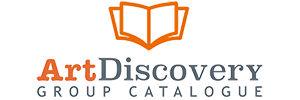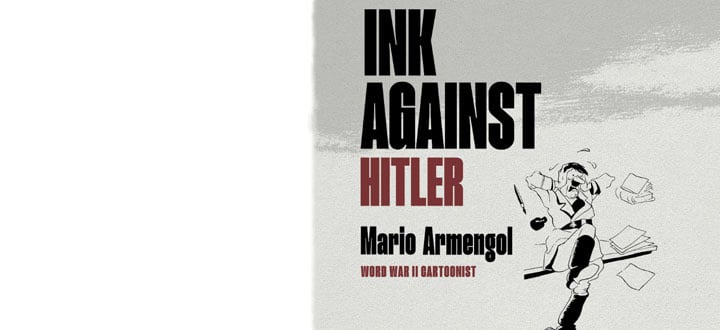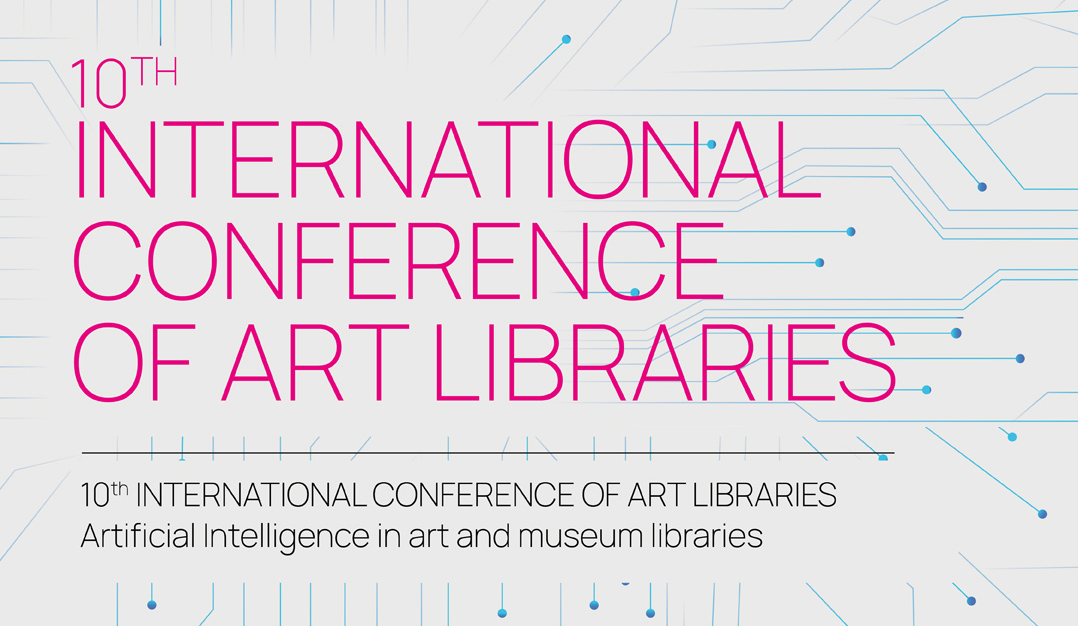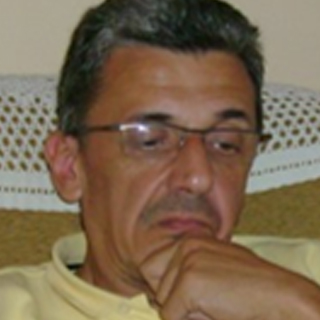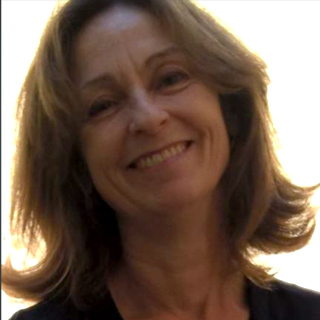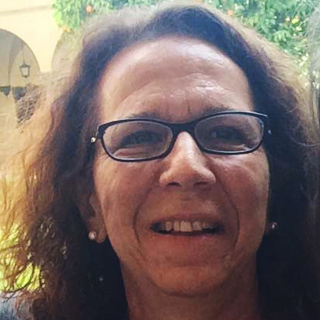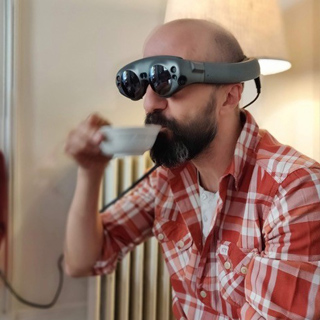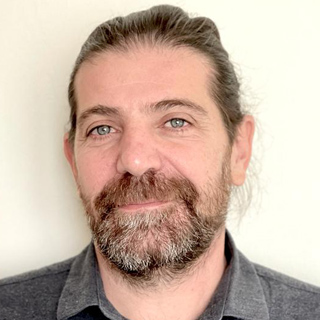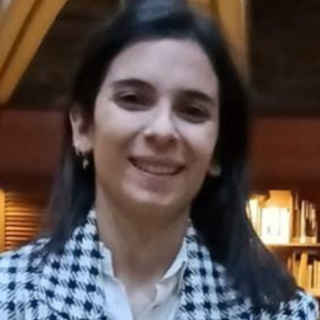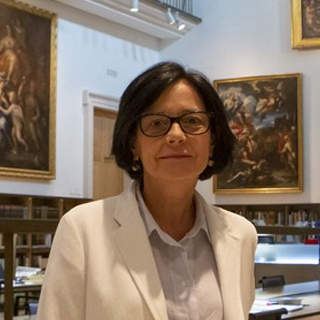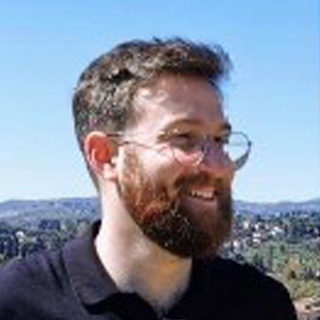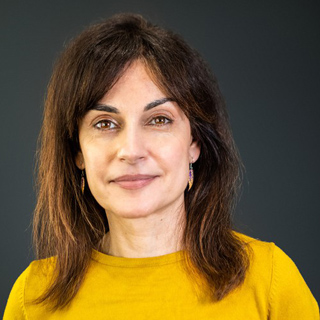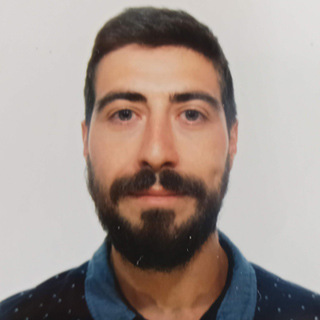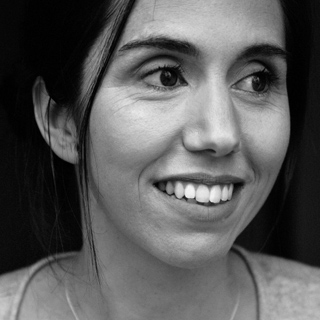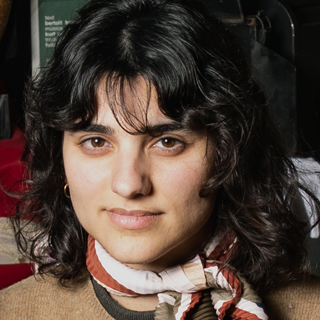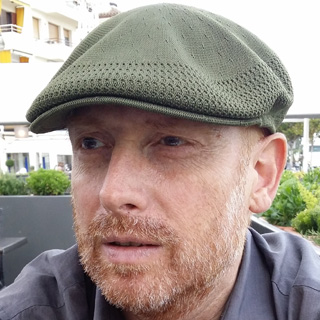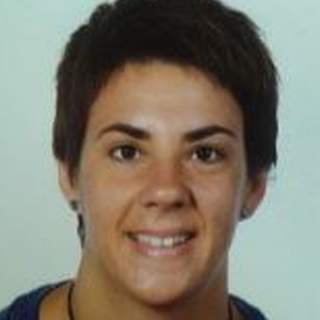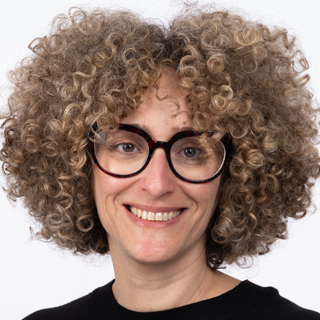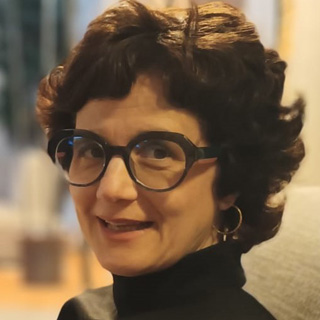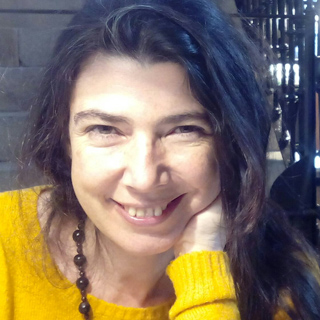Art Libraries
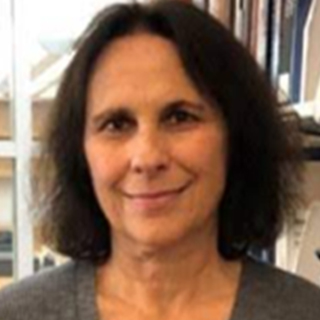
Kathleen Salomon
The Getty Research Institute,
Los Angeles, United States
CV
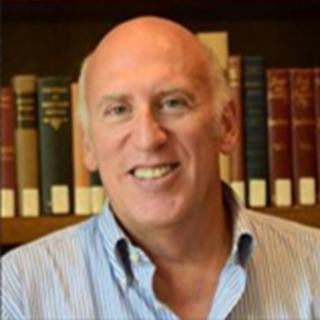
Michael Rocke
Berenson Library, Villa I Tatti-The Harvard University Center for Italian Renaissance Studies,
Florència, Itàlia
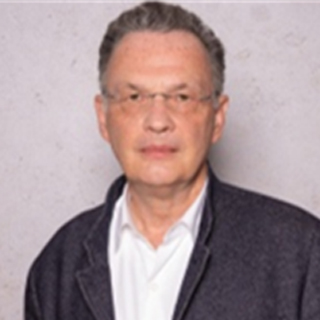
Rüdiger Hoyer
Library of the Zentralinstitut für Kunstgeschichte, Munic, Germany
CV
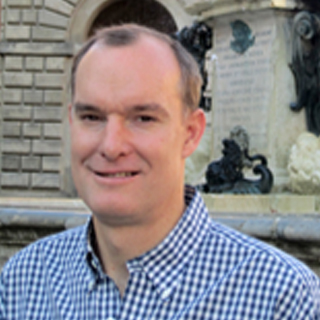
Sebastian Hierl
Arthur & Janet C. Ross Library, American Academy in Rome, Italy
CV
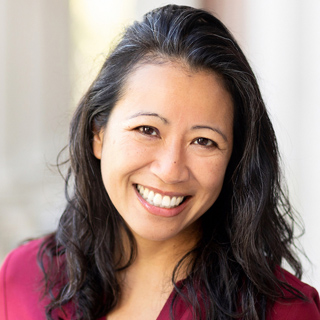
Shalimar Fojas White
Fine Arts Library. Harvard University, Cambridge, United States
CV
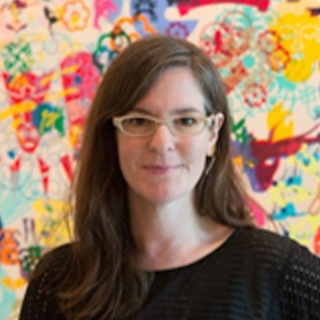
Sarah Osborne Bender
National Gallery of Art, Washington DC, United States
CV
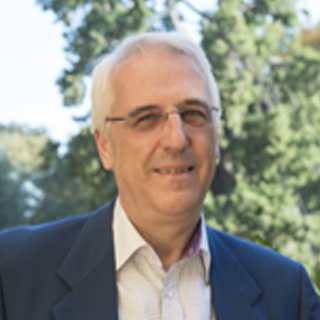
Jan Simane
Libary of the Kunsthistorisches Institut in Florenz, Max-Planck-Institut, Florència, Itàlia
CV
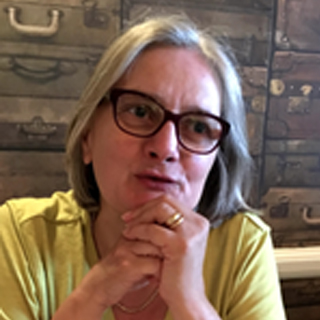
Wendy Fish
Trustee of the Society of Architectural Historians of Great Britain; Independent library consultant.
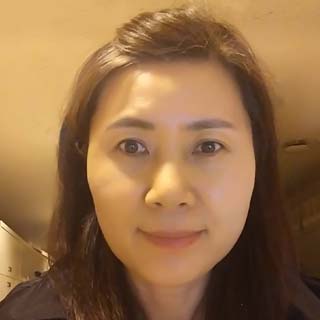
Jung Soo Bae
CV
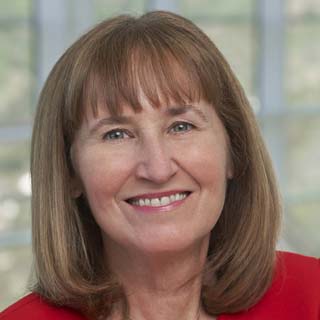
Lynda Bunting
CV
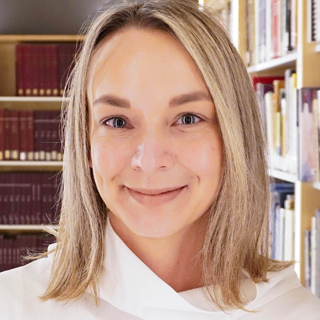
Cathryn Copper
CV
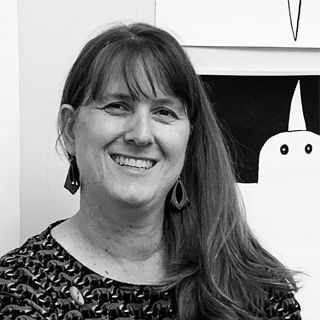
Heather Gendron
CV

Ellen Prokop
CV
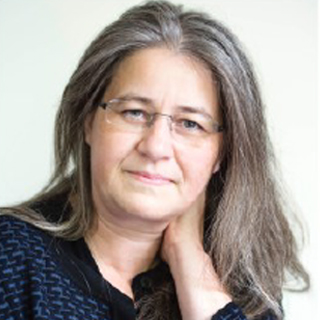
Saskia Scheltjens
CV

Jan Simane
CV
12:00 Juan Antonio Casado (Both.rocks!, Madrid) Integrating Artificial Intelligence: Transformation and challenges in art libraries
14:45 Heather Gendron (Robert B. Haas Family Arts Library, Yale) Yale Library Learns: An Organizational Learning Program About Generative AI
14:30 Amor Álvarez Pedreira (Museo Nacional Centro de Arte Reina Sofía) The Museum Meets its own Archive: The Digital Reconversion of the Central Archive of a Contemporary Art Museum
The challenge of preserving physical collections in university art libraries
One of the great challenges we face in university libraries is the preservation of physical collections. This proposal aims to identify the main causes and obstacles that prevent the proper preservation of these physical collections.
In this respect, preservation is mainly threatened by a lack of space. In the university context, this situation is exacerbated. In Humanities and Social Sciences disciplines, the situation is more critical than in other fields of knowledge, such as pure or applied sciences, because the rate of publication in electronic formats has been lower. Likewise, the availability of bibliography in electronic format continues to be scarce and limited in diversity.
In the field of art, furthermore, the physical format often carries as much significance as the content of the work. Also, in some cases, such as artist's books, does an electronic format make sense? Additionally, it has been demonstrated that the practice of browsing directly on the shelves is relevant for students in art-related disciplines, with this behaviour forming part of the creative process.
To try to alleviate this situation and ensure the preservation of the important collections amassed, policies for collection management and preservation of common funds for libraries with art collections are needed, whether they are museum, specialized, or university libraries. Also, there is a need for storage and deposit spaces that are nearby, flexible and efficient, so that access to collections is practically transparent to the user. Currently, if we focus on the Catalan context, there is only the cooperative warehouse GEPA (Guarantee of Space for Access Preservation), in the city of Lleida
Jung Soo Bae
An Experiment with ChatGPT to Expedite Subject Cataloging for Electronic Art Publications
This presentation will explore the potential applications of ChatGPT 3.5, a widely accessible generative AI, for subject cataloging of electronic art publications. Subject cataloging is vital for organizing and providing access to library collections. However, the traditional method of generating subject headings for resources can be both time-consuming and resource-intensive. To address this issue, the talk will explore how ChatGPT can be employed to expedite the subject cataloging process for electronic resources related to art and art history.
The session will present an experimental design to assess ChatGPT 3.5's performance in subject cataloging. This involves selecting sample titles from the National Gallery of Art's electronic collections and using ChatGPT to generate Library of Congress Subject Headings based on titles, tables of contents, and summaries. The generated subject headings will be compared to those created by human catalogers, focusing on accuracy, efficiency, and consistency across different factors. Additionally, the talk will highlight the potential benefits of integrating ChatGPT into subject cataloging workflows, such as improved productivity and scalability. Challenges and limitations of AI-driven cataloging, including issues of bias, accuracy, and interpretability, will also be addressed.
The goal of this presentation is to spark discussion within the art library community about the role of AI in metadata management and the future of subject cataloging in the digital era. Attendees will gain insights into the opportunities and challenges of incorporating generative AI into library cataloging processes, particularly for electronic art publications.
Joanne Bloom
Spain at Harvard University: The photographic collections of the Fine Arts Library documenting Spanish art and architecture.
The Fine Arts Library at Harvard University holds over two million 19th- and 20th-century photographs documenting art and architecture. Well over 60,000 of these represent all types of artistic production in Spain including architecture, painting, sculpture, decorative arts, and illuminated manuscripts.
The library’s holdings date back to 1875, when Charles Eliot Norton was appointed the first professor of the History of Art in the United States. Photographs were acquired to facilitate teaching in what was then known as the Fine Arts department. These photographs were first purchased by or gifted to the Fogg Museum at Harvard, established in 1895, then the Fogg Museum Library, established in 1927, which then became the Fine Arts Library in 1962. From the beginning, photographs of Spanish art and architecture were incorporated into the collections.
Two Harvard professors figured prominently in the establishment of the Fine Arts photograph collection as a preeminent resource for documentation of Spain.
Chandler Rathfon Post taught at Harvard from 1909-1950. Post authored the 14 volume survey series, A History of Spanish Painting, and most of the photographs found their way into the Library collection. Post declared that his goal was to create the largest and most comprehensive photo archive of Spanish art and architecture outside of Spain, and during his tenure he acquired new material never before available.
The second faculty member was the Medieval architectural historian Arthur Kingsley Porter, who taught at Harvard from 1920-1923 and then again from 1925 until his death in 1933. Porter and his wife, Lucy Wallace Porter, photographed throughout Spain and France and these expeditions provided the photographs published in his Spanish Romanesque Sculpture and Romanesque Sculpture of the Pilgrimage Roads. Porter provided prints of many of these photographs to the library during his lifetime and his widow Lucy Wallace Porter donated their negatives and prints to the Fine Arts Library before her death.
The Fine Arts Library also holds a large number of photographs purchased between 1900 and 1939 from the Arxiu Mas, now part of the Instituto Amatller de Arte Hispánico. Some were in fact commissioned by the Fogg Museum Library with the advice of Chandler R. Post during the 1930s. The Library continued to acquire Mas photographs through the 1990s on a subscription basis.
Isabel Bordes Cabrera
Speaking data (Hablando en data) is the first data visualization project of the Library and Documentation Centre of the Museo Nacional Centro de Arte Reina Sofía (MNCARS), in collaboration with the Faculty of Social Sciences of the University of Salamanca. Its aim is to analyse and visualize the presence of women artists, art critics, curators, writers and authors in its bibliographic catalogue, a catalogue specialized in contemporary art. The project seeks to connect and compile the information available on these creators in other databases (Virtual International Authority File, catalogue of authorities of the BNE, Wikidata, Wikipedia) and to offer the visualization of these results through its website in a gallery and a chronological map format. Furthermore, all the information compiled is available for consultation, use or downloading, leaving open the possibility of other approaches and visualizations, on both the project's own website and the datos.gob.es page. Not surprisingly, it has become the first and only dataset that a national contemporary art museum such as the MNCARS has made available to citizens and reusing agents who might be interested.
In short, it is a project of:
- Alliances. Constructed between a national museum of contemporary art and a university research team, combining various information technologies (cataloguing, data refinement, statistics, artificial intelligence...).
- Transparency. It has allowed us to publicly acknowledge the presence (absence) of women in our bibliographic catalogue, not in a static way, but with the firm intention of making changes to our collection development policy. It is a project in which not only pointing out the presence of women is key, but also their absence in resources such as Wikidata or Wikipedia. In fact, these absences have been the key driver for the organization of editing sessions on Wikipedia organized with Wikimedia Spain and the Museum's resident Wikipedian.
- Potentialities. The visualizations offered through the project are offered as a possibility. The publication of the resulting dataset highlights that other uses and representations are possible, stating that most of the best ideas come from outside.
The Project has recently been awarded the council for library cooperation’s quality seal 2023 in the category of specialized libraries.
Lynda Bunting
Indexing AATA Online with Machine Learning: Do the Benefits Outweigh the Pitfalls?
Presents the background, implementation, testing, and outcomes of two tools that use machine learning to automatically generate index terms for AATA Online, an abstracting and indexing database focusing on the conservation and preservation of material culture, published by the Getty Conservation Institute (GCI). AATA's indexing workflow is a time-consuming process that has required intensive manpower. Automating this process for a predetermined set of records could help staff eliminate the backlog and focus their attention on other projects. The two indexing tools that will be discussed were written with Python scripts and trained on large datasets – over 10,000 records in the first case and over 90,000 in the second – extracted from AATA Online, which uses Getty's Art and Architecture Thesaurus (AAT) as its primary subject vocabulary for indexing. The presenter will briefly describe the tools, one of which was generated in-house and the other by the Finnish National Library (Annif), as well as their implementation issues, indexing effectiveness, and potential need for human oversight and corrections.
Juan Antonio Casado
Integrating Artificial Intelligence: Transformation and challenges in art libraries
Artificial intelligence (AI) is redefining the landscape of numerous industries, including the cultural sector. Specifically, art and museum libraries are presented with a unique opportunity to leverage AI to enhance collection management, user accessibility, and public interaction. This presentation will explore the basics of AI, highlighting its main components such as machine learning, natural language processing, and computer vision, and how these can be applied in the context of museum libraries. Practical cases where AI has been implemented for the digitization and automated cataloguing of collections will be examined, significantly improving efficiency and accuracy in data management. Additionally, semantic search tools that offer a better user experience will be discussed, allowing more intuitive and enriched access to vast cultural resources. Personalization of visitor experiences and accessibility options will also be considered. However, the adoption of AI is not without challenges. This talk will also address the technical challenges related to the integration of legacy technology systems and data quality, as well as ethical issues such as energy consumption, information privacy, and algorithmic biases. Strategies to mitigate these issues will be presented, and the importance of adopting an ethical and conscious approach to the use of AI technologies will be discussed. Lastly, the audience will be invited to consider the unexplored potential of AI in collection management and public interaction, and to explore how collaboration between institutions can be a key driver for innovation and continuous improvement in museum libraries. This presentation will seek not only to inform but also to inspire participants to consider how artificial intelligence can be implemented in their own institutions to transform and enrich cultural management and the public experience in the environment of museum libraries. We have also considered the possibility of organizing a practical workshop (unidirectional, a talk with a practical focus) where we would explore the possibilities of knowledge extraction and relation in digitized holdings (such as Retrieval Augmented Generation (RAG), graph databases, etc.) and how this can change the way libraries manage and exploit information, for both user service and research. Although this proposal deviates from the topics suggested in the call for papers, we believed it important to propose it due to the interest we see in these techniques.
Anabel de la Paz and Pep Casals
The Teatre Lliure, nestled at the core of Spain's contemporary creative landscape, has recently introduced the Arxiu Lliure (https://arxiu.teatrelliure.com), a digital platform revolutionizing access to its theatrical heritage from 1976 to the present. Essentially, this pioneering project not only grants public access to its extensive archive but it also leads the way in utilizing artificial intelligence tools to revolutionize the cataloguing process of its diverse collection, which comprises over 74,500 heritage objects, making it available to everybody with the aim of continuing to foster creation.
This case study is significant for museum and library professionals, mirroring traditional archiving practices while navigating technological innovation alongside ethical considerations, particularly regarding facial recognition data. Along these lines, central to the Arxiu Lliure success lies the qUIC tool, an AI-driven cataloguing tool developed by Coeli Platform, which utilizes pattern recognition algorithms to streamline archival processes, identifying over 120,000 faces across nearly 60,000 photographs, demonstrating a commitment to responsible data usage within the sector's ethical and legal boundaries. This fusion of human insight with technological innovation emphasizes the importance of integrating Artificial Intelligence (AI) with Natural Intelligence (NI) in archival practices, setting a precedent for cultural institutions while emphasizing the importance of collaboration between departments within the institution.
When addressing the ephemeral nature of theatre, the Arxiu Lliure raises fundamental questions relevant to heritage collections: how to archive a theatrical instant? How to counteract the fleeting nature of the theatre? Why is it important to do so? While the memory of a show may linger, it is also preserved in a wide range of documents. The Arxiu Lliure houses over 74,500 items from more than 2,000 shows and events, including photographs, programmes, posters, press clippings, objects, soundscapes, plans, videos, interviews, music, and anecdotes. Apart from its extensive collection, the Arxiu Lliure serves as a dynamic platform for exploration, akin to the immersive experience of live theatre. That is no say, an archive that is alive, a vivid experience.
EIn this presentation, we will delve into the outcomes of this experimental project and its practical applications across the institution, highlighting the symbiotic relationship between Artificial Intelligence (AI) and Natural Intelligence (NI). With an interdisciplinary approach, we will explore the Teatre Lliure's commitment to preserving its artistic heritage and the role of technology, while simultaneously nurturing creativity and research endeavours fostering the utilization of Arxiu Lliure's rich online heritage.
Cathryn Copper
-- Coming soon --
María Luisa Cuenca
The Digital Library in the context of the Prado Museum Website
The Digital Library will promote the conservation of bibliographic holdings and facilitate free access to 5,600 issues of periodicals and 6,000 books specialized in artistic literature and published from the late 15th century to the early 20th century. Some of these works are even written or illustrated with prints engraved by artists represented in the Museum's galleries, such as Albrecht Dürer or Peter Paul Rubens.
The Prado Museum library holds a collection of 9,000 rare books, mainly treatises on architecture, painting, sculpture, engraving or drawing. There are also books about festivals, emblems, iconography, anatomy, proportion and the physiognomy of the human body, as well as an important set of drawing books. This collection can now be viewed for free through the website.
The Digital Library has been integrated in the Prado Museum website with other digital collections such as the Art Works Collection, the Digital Archive, Ephemeral Prado and Confiscated artifacts. The Prado Museum shares its collections with users from all over the world who can enter the Prado Museum website to satisfy their needs for information and generate new knowledge from the reuse of these digital objects.
Pau Expósito Jufré
Preservation and Access: Integration of the personal library of art critic Maria Lluïsa Borràs in the Library of the University of Girona
This proposal addresses the exhaustive process of integration of the impressive bibliographic collection of art critic Maria Lluïsa Borràs at the Library of the University of Girona. With more than 20,000 documents, including books, exhibition catalogues, newspaper clippings, etc., this collection represents an invaluable treasure for the academic and artistic community, a highly important sample for the Catalan and Spanish contemporary art of the late twentieth century (seventies, eighties and nineties). The collection contains exhibition catalogues of a vast diversity of artists from the country, as well as international artists and art biennials. The University of Girona, thanks to the patronage of the Nando & Elsa Peretti Foundation, has embarked on a multidisciplinary project to safeguard and provide access to this rich cultural heritage.
The integration process has been divided into several phases, starting with an exhaustive inventory of the collection, followed by the detailed cataloguing of each document and, finally, the strategic dissemination of the resources. This proposal analyses the strategies implemented to effectively integrate the collection into the university environment, facing practical and theoretical challenges along the way. Innovative technologies used for long-term preservation and open access to these resources are explored, as well as networked cataloguing practices that have enabled efficient management and easy browsing of the collection.
Through this project, the University of Girona has not only assumed the responsibility of being the custodian of this artistic legacy but has also facilitated its access and use by researchers, students and art lovers. This work offers a reflection on the broader implications of integrating an art critic's personal library into an academic environment, highlighting the importance of interdisciplinary collaboration and commitment to the preservation of cultural heritage.
Marc Folia i Marta Riera Sagrera
The METAGLAM project represents a pioneering initiative focused on revolutionizing digital cultural heritage access and exploration through the innovative integration of a 3D browsing interface. In this respect, anchored by a pilot test conducted in collaboration with the Library of Catalonia, METAGLAM endeavours to transcend traditional list browsing paradigms in the cultural sector for libraries, archives, museums, and other entities.
The project presents an approach combining post-OCR correction and content-based indexation to transform multilingual historical archives into information systems. At the heart of this project, METAGLAM strives to enrich content using artificial intelligence while integrating user behaviour to enhance browsing experiences and recommendations. Along these lines, the METAGLAM project investigates how to optimize browsing and searches if these contents are arranged in a three-dimensional virtual space that is not necessarily figurative, in other words, without the need to place a user-avatar in a library and reproduce the movements as if it were a real library. Overall, the evaluation is carried out on a new dataset of multilingual historical documents from the early 20th century, mostly in Catalan, provided by the digital repository ARCA (Archive of Old Catalan Journals), managed by the Library of Catalonia. The dataset, which we make publicly available, represents the first Catalan corpus of OCR documents to ever be released. In essence, our experiments show that the post-OCR corrector effectively improves the quality of the extracted texts, which leads to better embeddings and, consequently, better document clusters.
This presentation would be part of the METAGLAM Project (PLEC2022-009322) funded by the Spanish Ministry of Science, Innovation and Universities (MCIN/AEI/10.13039/501100011033) and by the European Union "NextGenerationEU" / PRTR.
Furthermore, integral to the project's success is the collaboration of diverse stakeholders: Coeli Platform, Eurecat Centre Tecnològic de Catalunya, Mobile Media Content, and Library of Catalonia. Their collective expertise in research, data architecture, metadata, and library collections provide crucial insights into structuring the project's framework, emphasizing the importance of collaboration between technological and cultural institutions.
In our presentation, we will share the pioneering METAGLAM project and its outcomes, along with insights into the implications of this research for other institutions. By leveraging cutting-edge technologies and collaborative partnerships, the project does not only promise to enhance browsing experiences, but it also lays the groundwork for future progress in preserving and disseminating our collective cultural legacy.
Heather Gendron
Yale Library Learns: An Organizational Learning Program About Generative AI
In late 2023, generative AI was made a strategic priority at Yale University. In response, a team was formed at Yale University Library to coordinate a yearlong, organization-wide program for its 500+ staff and is chaired by the director of the Robert B. Haas Family Arts Library at Yale. The program will increase library staffs’ understanding of AI tools, methods, outputs, as well as the ethical dimensions to working with AI in LAMs. (A strength of Yale University is its deep cultural heritage resources. In addition to the libraries and archives, including the Beinecke Rare Books and Manuscript Library, our partners include the Yale University Art Gallery, Center for British Art, and the Peabody Museum.) AI applications for LUX, the university’s new cultural heritage discovery platform, will be part of the program. This talk will outline the specific learning outcomes that were defined by the team, the aims and activities planned for the program, and a description of the courses created by library staff for an online learning portal.
Amor Alvarez Pedreira
The Central Archive is responsible for managing the documentation produced by the Museum's departments in their daily activities, with the aim of conserving and disseminating the memory of a national institution of reference in contemporary art.
Its current challenges are threefold:
- Reconnecting the Museum with its archive: resolving the paradox of a contemporary art museum accustomed to perceiving the archive as a research tool and which, in its construction of the future, ran the risk of forgetting that in its present it generates the memory of the institution.
- Digital reconversion: resolving the anachronism that in the 21st century the archive could only receive paper, when the whole museum has been generating, if not digital, then at least mixed files for several years now.
- Reinforcing dissemination: both internally (intranet, training, etc.) and externally (institutional website, conferences, visits, etc.), making itself known as a service not only for research, but also to support the objectives and aims of the museum (according to its regulatory law, Law 34/2011, of 4 October).
The recent health crisis highlighted the archive's difficulties in providing a service beyond the physical, which made it necessary to focus efforts on its digital reconversion. In this context, and thanks to funds from the EU's Recovery, Transformation and Resilience Plan, the ambitious project "The Museum meets its own Archive" was launched in 2021, with two main axes:
- Migration of the management system to a system that would allow the reception of analogue and digital documentation, as well as providing a gateway to the researcher through a search and dissemination portal.
-
Ingesting digital content into the system in order to demonstrate to the management team that the Central
Archive is a key part of the institution. This has been achieved through two projects:
- A document management audit that enabled us to know the activity and documentation produced in each department and which would be susceptible to transfer
- A massive retrospective digitization project of documentation already described by the central archive.
As a result, there are already several web portals with digital content that will optimize the Archive's response to the external and internal researcher. This does not fail to represent an intra-institutional change, by raising awareness of the fact that the documentation produced undoubtedly has undeniable historical and cultural value.
Beatriz Martín Morales
Lessons learned from the physical and digital management of artist and museum archives
In this presentation, I shall present the recent progress made in the management of art archives at the Juan March Foundation Library.
I will begin by exploring the origins of the Library's art collection, which is crucial to understanding the context in which the archives are received. Subsequently, I will describe the processes used for the physical and digital management of various artist and museum archives.
First of all, I will analyse the archive of the artist Fernando Zóbel, received in 2015. There is a detailed description of this archive in the archiving software, a digital repository accessible to the public since 2017, and a large part of the materials have been digitised and preserved.
I will then explore the Archive of Abstract Artists in Spain (AAAeE), a unique resource for researchers that began life as the Dictionary of Abstract Painters, a project by Zóbel, and which now houses more than a thousand records.
Finally, I will discuss the plan for the Exhibition Archive, which contains all the complementary material and ephemera of the exhibitions held by the foundation since the first one in 1973. I will explain how and where these materials are physically preserved, the archival classification table, and future plans for digitisation, preservation and dissemination.
Alberto Medina Morales
The Library and Documentation Centre of the Reina Sofía Museum is a specialized centre that collects and preserves books and documentation on artists and artistic movements from 1881 to the present day. Despite the specific nature of this library and the uniqueness of its holdings, access to its collections is open not only to researchers, but also to the general public, who are sometimes more numerous than the specialist public. Far from feeling this situation as a threat, it was seen as an opportunity and was one of the reasons for the birth of Almost Books.
Almost Books is the Library and Documentation Centre's cultural mediation programme that proposes an approach to its spaces, collections, and services, beyond its nature as a platform for research into contemporary art. The programme, implemented since 2021, approaches the library as a reflective and participatory territory, promoting contact between citizens and its documentary and artistic collections. Its lines of action – some developed inside the Library, others elsewhere – are based on the book and the document as common and dynamic elements, generating different projects such as: Other Books and So, a narrative and essay reading club; Magnetised Needle, a programme of visits to the documentary exhibitions in Space D and to the Library's facilities; Look Closely, a user training programme based on the artistic and documentary collections held by Museo Reina Sofía Library. The innovative and plural nature of this programme has been recognized by the Council for Library Cooperation’s Quality Seal, as a finalist project in the 2022 edition.
The experiences and the results obtained during the development of this library outreach programme have enabled us to identify various strengths and weaknesses that will need to be worked on in the coming years in order to make Almost Books more coherent, solid and cohesive in the future.
Ona Pagès Navarro y Ana Urroz Osés
Web access to art libraries and archives. The importance of interface, the question of interaction design
One of the fundamental aspects to consider in the organization of a library or archive is the access that users will have to that collection of documents and works. Of course, who better than an expert in library science to know how to organize a library. But in the case of the web version of such a collection, specific aspects of graphic design, human-computer interaction (HCI) design, and navigation design must be considered. All these topics require detailed study and personalized attention, depending on the volume of data, the target audience and the institution's brand design, among other aspects.
To ensure a good user experience (UX) in the use of and access to the resources offered online, it is necessary to have a multidisciplinary team that masters each of these aspects. This requires a specific methodology and a set of user tests that allow us to iterate until we refine the most suitable design.
In this conference, we will present the fundamental aspects in the design of online applications that impact UX: usability (laws and heuristics), visual design (colour, perception, and form theory concepts), and interaction design
In short, we aim to offer a review of the other necessary aspects of design that are involved in order to enhance the readability and understanding of libraries and art archives. It is through communication and shared work among different disciplines that a better development of access can be achieved.
Mario Pérez-Montoro
Data visualization as a research strategy in digital humanities
The emergence of Information and Communication Technologies (ICTs) has revolutionized most aspects of our lives. What have traditionally been academically considered to be the “humanities" have also been impacted by these technological developments. These advances are reflected in the design of museum websites and art libraries’ digital contents. The aim of this contribution is to address some of the references and new advances in the discipline of visualization within the field of digital humanities. To fulfil this purpose, I have organized this contribution into different sections. Additionally, the following two sections aim to identify some proposals that may be considered as references when visually representing textual units and historical events within the realm of digital humanities. The subsequent section addresses a series of visualizations that, while not commonly used as an analytical strategy within humanities disciplines, could represent a methodological innovation for visually analysing information and data addressed in research conducted in those areas of knowledge. Finally, the contribution is completed by offering some of the lessons learned and the conclusions that can be drawn from the analysis and proposals made.
Ellen Prokop
Discovering Spanish Art and Architecture in the Department of Image Collections at the National Gallery of Art, Washington, D.C.
The Department of Image Collections comprises a photo archive of more than sixteen million reproductions documenting the global history of the fine arts. Highlights from the holdings of Spanish art and architecture include 600 prints from glass plate negatives in the Archivo Ruiz Vernacci of the Spanish Cultural Heritage Institute (IPCE); nineteenth-century albums featuring Spanish architecture such as the Album fototípich de la catedral de Barcelona (1888); and the archive of the North American scholar, Harold Wethey (1902–1984). In addition to surveying these holdings, this brief presentation outlines recent efforts to promote discoverability of and access to these resources with attention to the department’s participation in PHAROS: The International Consortium of Photo Archives. This organization of fifteen European and North American art historical photo archives is committed to producing a digital research platform affording comprehensive consolidated access to the archives’ digitized images and corresponding scholarly documentation.
The platform, which will be launched in fall 2024, currently contains more than 2.8 million images and related metadata. To facilitate navigation and limit duplication, the consortium has developed a tool that relies on machine learning and computer vision technologies: the PHAROS Visual Search database. The database, which includes 91,086 digital files of paintings and drawings from six institutions, allows researchers to search by image rather than text through the comparison of digital files they have uploaded or selected from the provided dataset. Plans are underway to implement this innovation across the entire platform, with the goal to advance new connections and discoveries within the field of art history. By introducing the Department of Image Collection’s research materials related to the study of Spanish art and architecture together with its involvement in PHAROS, the talk touches on both themes of the conference, offering a case study of how artificial intelligence technology is being harnessed to connect researchers to rare materials.
Anna Pujols Grifè
The newspaper archive of the Rafael and María Teresa Santos Torroella Archive and Library
In 2014, the City Council of Girona, along with the acquisition of the artistic collection of Rafael and María Teresa Santos Torroella, received the donation of their Archive and Library from the heirs of Maite Bermejo.
The Santos Torroella Archive and Library includes a newspaper archive with over 1,500 titles. These publications help to explain the history of Rafael Santos Torroella (Portbou, 1914 – Barcelona, 2002), as a journalist and art critic: his early contributions to the press date back to 1928 in his hometown. In 1929, he moved to Huelva and later to Valladolid and Barcelona. Throughout this time, he contributed to publications such as Juliol, Meridià, and Treball. The Spanish Civil War disrupted his career in the written press. Rafael Santos joined a battalion of the republican army and was taken prisoner by Francoists in 1938 and held until 1939.
That year he was able to resume his journalistic activities. Living in Salamanca, he contributed to the local newspaper El Adelanto, was a correspondent for La Estafeta Literaria and, along with Antonio Tovar, founded and participated in academic journals like Lazarillo and Cátedra. He lived for a time in Madrid and in 1947 permanently relocated to Barcelona. His journalistic career includes contributions to magazines such as Proel (Santander), Espadaña (León), Revista de la Ideas Estéticas (Madrid), Ínsula (Madrid), Gaceta de las Artes (Madrid), Lar (San Sebastián), Papeles de Son Armadans (Palma de Mallorca), Destino (Barcelona), El Correo Catalán (Barcelona), Solidaridad Nacional (Barcelona), and El Noticiero Universal (Barcelona), among others.
In addition to Rafael Santos Torroella’s journalistic career, the archive includes some of the best-known titles of Avant-garde art in the 20th century. Rafael was the brother of the painter Ángeles Santos Torroella, who dazzled the intellectual elite of the time in 1929, aged just 18, when she presented her work Un mundo, at the 9th Autumn Salon in Madrid. Ramón Gómez de la Serna, Giménez Caballero, Ricardo Baroja, Jorge Guillen and others frequently visited their home. From then on, Rafael Santos devoted himself to studying and promoting new art. As a result of this fascination, the newspaper archive includes the two issues of Gallo, a Generation of 27 magazine, promoted by Federico García Lorca, L’Amic de les Arts, Pèl&Ploma, Els Quatre Gats, and also leading French publications such as La Révolution Surréaliste or 391, promoted by Francis Picabia.
Se trata de una hemeroteca que ofrece infinitas posibilidades para el estudio y la divulgación de la prensa histórica en Cataluña y en España, además de una ventana para la investigación del arte de vanguardia desde sus inicios.
This newspaper archive offers infinite possibilities for the study and dissemination of the historical press in Catalonia and Spain, as well as a window for the investigation of Avant-garde art from its beginnings.
Silvia Redondo Iniesta
The social role of museum libraries
Traditionally, the main objective of museum libraries has been to support museum staff and other external researchers. However, in recent years and in within the context of open science, some of these libraries have been reorienting their services, on the one hand to reach other types of users and, on the other, to preserve and disseminate knowledge and research in more accessible and open formats.
Hence, there is a trend towards a more social role and greater accessibility to citizens, which coincides with the new definition of museums, according to which research, citizen participation, accessibility, sustainability and inclusion, among others, should be highlighted.
This trend can be seen in the last BIMUS Museum Libraries Conference 2023, where several presentations focused on activities, services, and projects aimed at the general public. Museums such as, among others, the Centro de Arte Reina Sofía, the Sorolla Museum, and the Centro or Agencia Pública Casa Natal Pablo Ruiz Picasso, stood out. The Joaquim Folch i Torres Library of the Museu Nacional d’Art de Catalunya has been working for some years now to promote the social role of the library and bring art closer to the public. Since 2021, and in collaboration with the Public Library Service of the Generalitat de Catalunya, the MNAC library has offered the general public two virtual activities directed by moderators: a reading club called “Apassionart”, and “Art Fanatics”, a virtual art community formed by people interested in art and the museum.
Additionally, the results of a survey conducted in mid-2023 with more than 100 museum libraries confirm this interest in reaching an audience beyond museum staff and researchers, and they reveal a manifest interest in making the library more open and the promotion of its social role.
Museum libraries are therefore experiencing a moment of change and openness, in a context where open science, through citizen science, gives more and more prominence to the public and to the dissemination of knowledge and research in open formats.
Paula Sánchez García
The Library of the Spanish Cultural Heritage Institute: where we come from, where we are going
LThe Library of the Spanish Cultural Heritage Institute is a specialized one which offers a comprehensive document service for the Institute’s different areas of work, and for researchers and external users. The library emerged in 1990, in the second part of the architectural project. It is the first circular library building constructed in Spain but as an institution it is little known. Access to the public is free for the purposes of consultation, study and research of the materials it houses.
Its materials have grown continuously and intensely, and it is now an obligatory bibliographic reference in matters of the conservation and restoration of the Spanish Cultural Heritage. Today it comprises more than 35,000 volumes and almost 1,700 titles of specialist journals in several languages.
The aim of this paper is to explain the evolution of this library (materials, human resources, financial resources) and to show how, in recent years, social networks and library cooperation have been fundamental for increasing its use and its visitors (including film directors and producers who come to this library to record TV series and films).
The library catalogue is included in several projects (like BIMUS network, BIBLESPAGE catalogue) and the intention is to increase connections with other institutions and national and international projects such as ICCROM, Hispana, Dialnet, AENOR or the Collective Catalogue of Bibliographic Heritage.
Carolina Santamaria
LaDigitaldelReina: cross platform research for digital collections of the Museo Nacional Centro de Arte Reina Sofía (MNCARS)
LaDigitaldelReina was conceived with the idea of offering unitary public access to all the digital collections (artistic, documentary, photographic, immaterial) in the museum and which are accessible while respecting intellectual property laws.
Taking advantage of the versatility of new technologies, the aim was to contribute to the construction of a digital humanities that would improve users’ experience by enriching the contextualization of the works and the knowledge of the heritage held in the museum. And of course, enriching the research by offering the full texts of library documents, but also of the audio transcripts of conferences held at the museum or radio programmes.
Above all, it is intended as a research tool that transcends the collections themselves, generating space for relationships between traditionally separate sources. This relational aspect, in which materials from different sources converge, makes it possible to link the exhibitions with the works on display or with reference material, with photographs of the rooms, with the artists' profiles, etc. It also sheds light on materials traditionally hidden from use by museum professionals, not to mention the fact that it makes it possible to virtually unify archives held in different departments. In short, it contributes to the construction, conservation and dissemination of the museum's memory.
Saskia Scheltjens
Cultural AI initiatives in the Netherlands
The Netherlands has a long tradition of intense collaboration between computer scientists and the cultural heritage world. Maybe that is the reason why cultural Al initiatives and research find such fertile ground there for new developments and experiments. Cultural Al can be defined as the study, design and development of socio-technological Al systems that are implicitly or explicitly aware of the subtle and subjective complexity of human culture.
This presentation aims to provide a brief overview of past initiatives in the Netherlands, from early cultural informatics research to semantic web collaborations, to digital humanities projects in tandem with museums, libraries and archives. But most of all, it intends to paint a picture of current projects related to Cultural Al in the Dutch heritage world and beyond, and to conclude with some challenges and recommendations for building constructive partnerships between researchers and institutions based on several of those projects in the Rijksmuseum in Amsterdam.
The upcoming 10th International Conference of Art Libraries in Barcelona in October will be dedicated to two main topics:
- The landscape of art and museum libraries in Spain
- Artificial Intelligence in art and museum libraries
We are taking the opportunity to familiarize ourselves with the landscape of art and mu- seum libraries and archives in Spain, to better understand their traditions, structures and future plans and to explore the possibilities of in-depth cooperation with the artdiscov- ery.net network. To this end, representatives of Spanish institutions in particular are in- vited to present their concepts and especially strategies for the future.
Representatives of libraries outside the country who hold important collections on Spanish art and Iberian cultural history are encouraged to contribute as well, both to provide an international perspective and to highlight potentially valuable opportunities for connecting institutions.
In addition, the conference aims to facilitate an exchange of experiences on the topic of art libraries and artificial intelligence, particularly with regard to the networking of library holdings but also, for example to the sharing, using and protection of collection objects in an AI world. Specific applications and ongoing projects are of particular interest here.
There will be a choice of two conference formats:
- Presentations of 20 minutes
- Lightning talks of 5-10 minutes
Presentations can be given both in English (conference language) and Spanish. A simulta- neous translation in both directions will be provided.
The proposals for papers and lightning talks are due on April 30, 2024. Please include the title plus a max. 400-word abstract. A short CV should be added as well. The proposal must be written in English. Speakers will be notified within one month regarding the acceptance of their proposal. Please send your proposal to: [email protected].
Details of the International Art Libraries Conference:
Dates: Thursday – Saturday 3-5 October, 2024
Location: Museu Nacional d'Art de Catalunya, Barcelona (Spain)
Museu Nacional d'Art de Catalunya
How to get to the Museu Nacional d'Art de Catalunya
Metro
Lines L1, L3: Pl. Espanya
Buses
55 (the one that leaves the closest, stop: Museu Nacional
d’Art de Catalunya/Museu Etnològic)
150 (Pl. Espanya-Av. de l’Estadi/Piscines Picornell-Museu Nacional)
13 (Av. Francesc Ferrer i Guàrdia/Poble Espanyol) To Pl. Espanya 65, 79, 109, 165, D20, D40, H12, V7
Tourist Bus
Bus Turístic (Museu Nacional) / Barcelona City Tour
(Museu Nacional)
Train
FGC L8, R5, R6, R50, R60, S4, S8, S33 (Station Espanya)
Funicular
Metro Paral·lel (integrated fare) – Funicular de Montjuïc
On foot
Plaça d’Espanya - Avinguda Maria Cristina – Escalators up to the museum
Carrer Lleida - Teatre Mercat de les Flors and Teatre Grec – Stairs to the museum
Anella Olímpica - Escalators to the museum
Car
Paid public car park for cars and coaches with places
for persons with reduced mobility next to the museum
Bicycle
Bicing (carrer França Xica and plaça d’Espanya)

